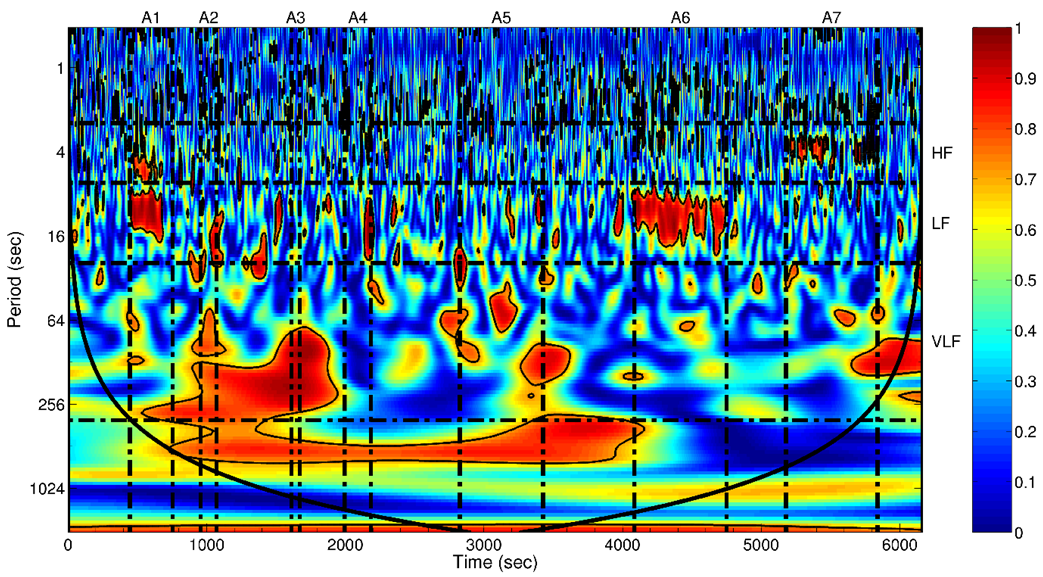Wavelet Coherence
Group dynamics is the study of interactions among two or more people connected by some form of social relationship. In athletics and team sports, the dynamics of the group can dramatically influence the outcome and the well-being of the players. Such a study is of primary importance in psychology and medicine where group dynamics affects the state of each member in a group. Similar phenomena manifest themselves in guided group meditation or prayer activities.
We develop a novel approach to exploit HRV as an indicator of the synchronicity and one's state of well-being. HRV is regulated by the opposite influence of the sympathetic and the parasympathetic branches of the autonomic nervous system,as detailed in [1]. The goal is to check and quantify how shared activity might induce shared physiological states. In this example, a yoga meditation techniques were conducted by D.~Shannahoff-Khalsa, and are detailed in [2], where their therapeutic value for treating various health conditions is described. We calculate the wavelet coherence described in [3], [4] to represent the synchronicity between two or more RR signals, as a function of time and frequency. The frequencies are divided into VLF, LF, and HF which are the three bands of interest. The time for the activities can be annotated in the plot by the user. We found it remarkable that using simple sensors we are able to capture the coherence of the heart signal between the two subjects, as a function of frequency and time. This entrainment is very clear for the activities A1 and A6 at the LF, and also for activity A7 at the HF. This is mostly due to the fact that these three activities involved a coordinated breathing pattern with a determined breathing period, which is reflected in the heart signal at the corresponding frequency.

Figure 1: Wavelet coherence of RR interval signal between two subjects during yoga session. (Hover over the image to see annotations)
Note1: In the figure, the signal below the continuous line is not significant, since under that line the border effects cannot be neglected [4].
References
[1] Task Force of the European Society of Cardiology and the North American Society of Pacing Electrophysiology, "Heart Rate Variability: Standards of Measurement, Physiological Interpretation, and Clinical Use," Circulation, vol. 93, no. 5, pp. 1043-1065, 1996.
[2] D. Shannahoff-Khalsa, Kundalini Yoga Meditation: Techniques Specific for Psychiatric Disorders, Couples Therapy, and Personal Growth. W. W. Norton and Co. Inc., 2006.
[3] C. Torrence and G. P. Compo, "A Practical Guide to Wavelet Analysis," Bulletin of the American Meteorological Society, vol. 79, no. 1, pp. 61- 78, Jan. 1998.
[4] A. Grinsted and J. C. Moore and S. Jevrejeva, "Application of the cross wavelet transform and wavelet coherence to geophysical time series," Nonlinear Processes in Geophysics, vol. 11, no. 5/6, pp. 561-566, 2004.


